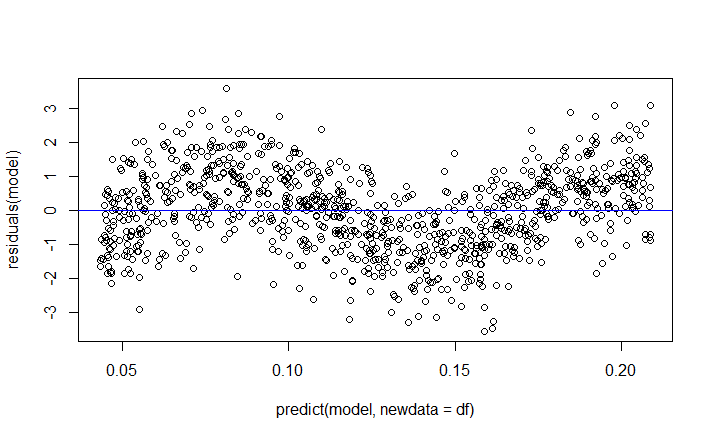This question arose from this question.
EDIT 1:
Forgot to include an error term in the example.
EDIT 2:
The model I am trying to fit is $y = \sin(x) + \epsilon_i$.
Given a certain data set, according to R I should get $\hat{y} = 0.60330 + 0.01797x$:
set.seed(1234)
n <- 5
df <- data.frame(x=runif(n, 1, 10))
df$mean.y.given.x <- sin(df$x)
df$y <- df$mean.y.given.x + rnorm(n)
model <- lm(y ~ x, data=df)
summary(model)
Call:
lm(formula = y ~ x, data = df)
Residuals:
1 2 3 4 5
0.6190 -1.1402 -0.4852 -0.2877 1.2941
Coefficients:
Estimate Std. Error t value Pr(>|t|)
(Intercept) 0.60330 1.45534 0.415 0.706
x 0.01797 0.22460 0.080 0.941
Residual standard error: 1.107 on 3 degrees of freedom
Multiple R-squared: 0.00213, Adjusted R-squared: -0.3305
F-statistic: 0.006404 on 1 and 3 DF, p-value: 0.9413
I would like to obtain $\hat{y}$ by hand now. However, all the questions I have done thus far is always of the form $y_i = \alpha + \beta x$, where $\alpha$ and $\beta$ are constants, so that $y_i$ is a linear function of $x_i$. Therefore, I am unsure of how to proceed when $y_i$ is not a linear function of $x$, hence my request for a worked examples for these kind of questions.
After that, I expect to be able to show that $E(y_i-\hat{y_i}) \neq 0$ because the plot of the residuals against the predicted value (for large $n$) is:
set.seed(1234)
n <- 1000
df <- data.frame(x=runif(n, 1, 10))
df$mean.y.given.x <- sin(df$x)
df$y <- df$mean.y.given.x + rnorm(n)
model <- lm(y ~ x, data=df)
plot(predict(model, newdata=df), residuals(model))
abline(a=0,b=0,col='blue')
 Based on the above plot, $E(y_i-\hat{y_i}) \neq 0$ must be true in this case, right?
Based on the above plot, $E(y_i-\hat{y_i}) \neq 0$ must be true in this case, right?